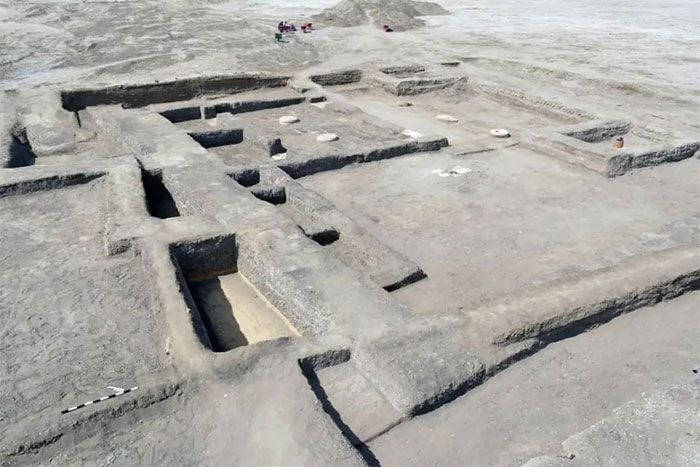Preliminary scientific studies show that the discovered building dates back to the time of King Thutmose III (1481-1425 BC) and may have been used as a guesthouse or royal palace.
According to a reporter in Cairo, on April 25, an Egyptian archaeological delegation excavated the ruins of a mud brick building at the archaeological site of Tell Habua (Tharo) in North Sinai province, which was used as a royal lodge or palace, located at the eastern gate of ancient Egypt, of the 18th Dynasty.
 Ruins of ancient royal lodges in North Sinai, Egypt. (Source: Egyptian Ministry of Tourism and Archeology).
Ruins of ancient royal lodges in North Sinai, Egypt. (Source: Egyptian Ministry of Tourism and Archeology).
Secretary General of the Egyptian Supreme Council of Antiquities, Dr. Mohamed Ismail Khaled, stated that preliminary scientific studies show that the building dates back to the reign of King Thutmose III (1481-1425 BC) and could be restored. used as a guesthouse or royal palace because of its architectural design, as well as some rare ceramics unearthed here.
According to Mr. Khaled, this discovery is part of a large excavation project to develop and restore archaeological sites in North Sinai province, in the Northeast region of Egypt. It also shows the role of the Sinai Peninsula in the military strategy and trade routes of ancient Egypt.
Archaeological experts further revealed that the king may have lived in this building during military campaigns to expand the ancient Egyptian empire to the East.
The above discovery reveals more information about Egypt’s military history during the New Kingdom, especially in the Sinai region.
Director General of the Sinai Antiquities Authority and head of the excavation team, Dr. Hisham Hussein, said the structure had two main rectangular halls connected by a series of adjoining rooms.
These architectural elements highlight the strategic and functional design typical of royal military outposts.
Director of the North Sinai Provincial Antiquities Authority Ramadan Helmy, assessed that the royal lodge was surrounded by a wall with the main gate facing east. This shows the long-term strategic importance of this project.





